Articles
Issue Reviewers
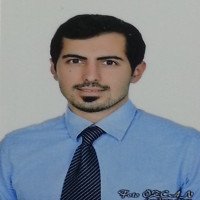
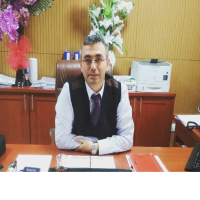
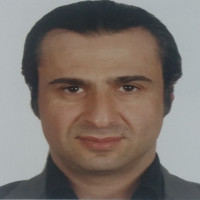

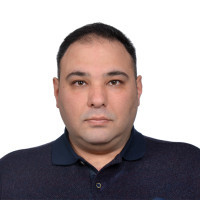

 0000-0002-4541-9089
0000-0002-4541-9089
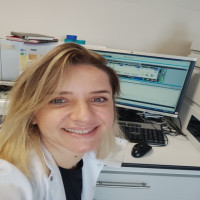
 0000-0001-6102-7571
0000-0001-6102-7571
 0000-0002-0492-9840
0000-0002-0492-9840

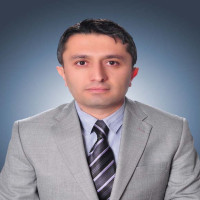
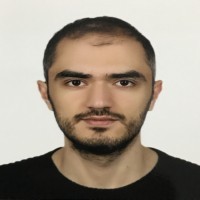
 0000-0003-1223-3568
0000-0003-1223-3568




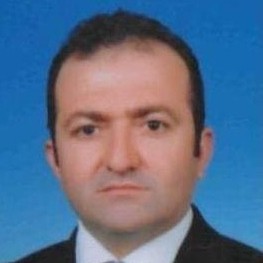
 0000-0002-7187-7825
0000-0002-7187-7825
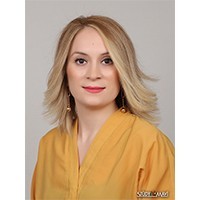
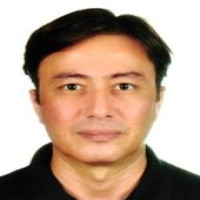

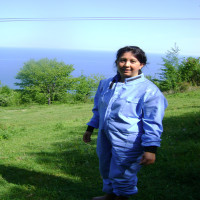
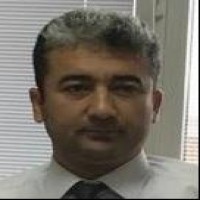
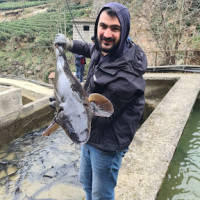
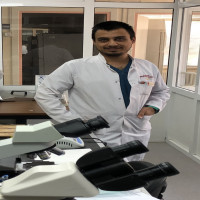


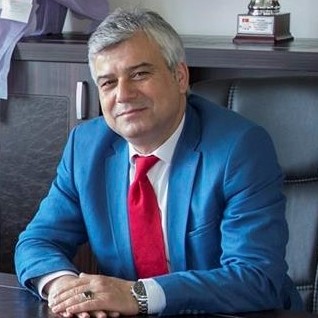

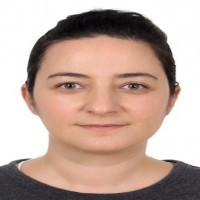
 0000-0002-4377-1628
0000-0002-4377-1628
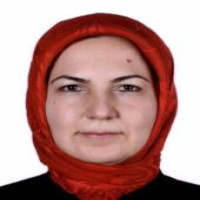
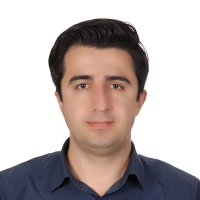

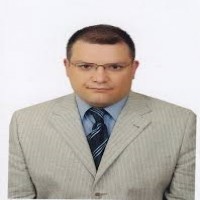
 0000-0003-2770-561X
0000-0003-2770-561X


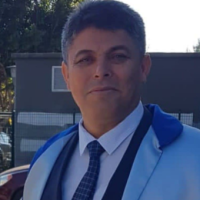
 0000-0002-9122-1495
0000-0002-9122-1495

 0000-0002-2247-0703
0000-0002-2247-0703

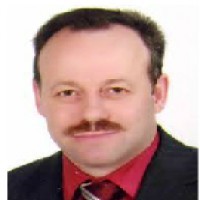

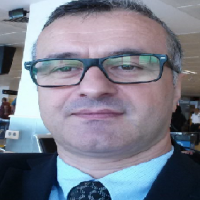
 0000-0003-2964-1760
0000-0003-2964-1760

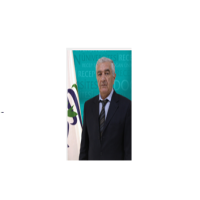


 0000-0001-5419-6115
0000-0001-5419-6115
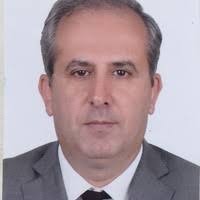
 0000-0002-9547-0966
0000-0002-9547-0966
 0000-0002-8833-996X
0000-0002-8833-996X


 0000-0001-6994-1106
0000-0001-6994-1106



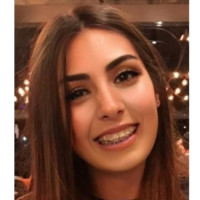

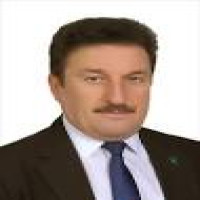
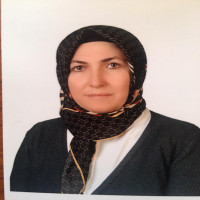
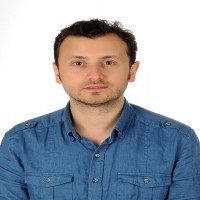
Aim & Scope
Our journal “Journal of Anatolian Environmental and Animal Sciences (JAES)”, which was established in 2016. “Journal of Anatolian Environmental and Animal Sciences (JAES)” will publish peer-reviewed articles that cover all aspects of environmental and animal science in the form of original articles, review articles, and short communications.
Our journal “Journal of Anatolian Environmental and Animal Sciences (JAES)”, which was established in 2016. “Journal of Anatolian Environmental and Animal Sciences (JAES)” will publish peer-reviewed articles that cover all aspects of environmental and animal science in the form of original articles, review articles, and short communications. The journal will be published quarterly in English or Turkish language. JAES will not charge article submission or processing. Our journal is open to all articles related to environmental issues, ecological processes and livestock breeding as well as the main theme of environment, aquaculture and animal husbandry.
General topics for publication include:
Aquatic, terrestrial and atmospheric environment
Environmental pollution
Fisheries and Aquatic Sciences
Fisheries and Animal Husbandry
Biology, Taxonomy and Molecular Biology
Aquaculture Science, Aquaculture Diseases and Genetics
Oceanography and Fisheries Science
Aquatic Ecosystem and Fisheries Management
Wildlife and Fisheries
Biology of Freshwater, Brackish and Marine Environment
Water conservation and sustainability
Inland waters protection and management
Seafood technology and safety
Water quality and pollution
One health
Micropollutants
Pharmacology and toxicology
Author Guidelines
Journal of Anatolian Environmental and Animal Sciences (JAES)
MAKALE YAYINLAMA KURALLARI
1. Fen Bilimleri üzerine hakemli bilimsel yayın organı olup, Haziran, Ağustos ve Aralık aylarında olmak üzere yılda 3 kez elektronik olarak dergipark sisteminde online olarak yayınlanmaktadır. Derginin kısaltılmış ismi “JAES” dir.
2. Bu dergide yayınlanaçak olan makaleler Türkçe veya İngilizce dillerinden birinde hazırlanmış ve daha önce başka bir dergide yayınlanmamış veya başka bir dergiye eşzamanlı olarak sunulmamış olmalıdır. Bu dergideki yayınlanması planlanan makaleler Fen Bilimleri alanında, Türkiye'de ve dünyada yapılan biyoloji, çevre, tarım, ziraat, orman, su ürünleri ve hayvancılık ilgili konular üzerine yapılan araştırma çalışmaları hakkında kamuoyunu bilgilendirmek, güncel teknolojik gelişmeleri sektöre aktarmak, tarımsal ve hayvansal orjinli gıda hijyeni ve teknolojisi, egzotik hayvanlar bilimi ve laboratuvar hayvanları bilimi vs, diğer araştırma ve uygulama birimleri alanlarında hazırlanmış orijinal araştırma makalesi, vaka sunumu ve davetli veya editörün onayı alınmış derleme çalışmaları yayımlanır.
3. JAES Dergisi’nde yayımlanmak üzere gönderilen makalelerde deney hayvanı kullanılmış ise; makalenin Materyal ve Metot kısmında “Yerel Etik Kurulu onayı alınmıştır” veya “Yerel Etik Kurulu ilkelerine uyulmuştur” ifadesi mutlaka yer almalıdır. Yazar(lar); eğer yerel etik kurulu onayı alınmış ise etik kurul onayı aldıkları kurumu ve onay numarasını belirtmelidirler. Tez çalışmalarından özetlenen makalelerde ise etik kurul kararı aranmaz.
4. Yazarlar, başka kaynaklardan alınan ve kullanılan materyal ile ilgili telif hakkı şartlarına uymak ve telif hakkının dergiye devrini ifade eden sözleşmeyi imzalamakla yükümlüdürler. Dergide yer alan yazılardan doğacak her türlü sorumluluk makalenin yazar(lar)ına aittir.
5. Hayvanlarda İhbarı Mecburi Hastalıklar ile ilgili yapılan her türlü makalerin (Orjinal Araştırma Makalesi, Vaka Sunumu, Derleme) değerlendirmeye alınabilmesi için T.C. Gıda, Tarım ve Hayvancılık Bakanlığı’ndan alınmış izin yazısının Dergi Editörlüğüne sunulması zorunludur.
6. Makaleler değerlendirilmesi ilgili editör tarafından konusunda uzman en az iki hakemin danışmanlığına gönderilir. Makalenin yayına kabulü, ançak danışmanların ve dergi editörlüğünün kararına bağlıdır.
JAES MAKALE HAZIRLAMA ŞARTLARI
1. Makaleler, A4 kâğıdı ebatlarında 1.5 satır aralıklı olarak, kenarlarından 3 cm boşluk bırakarak yazılmalı, şekil, tablolar ve kaynaklarda dahil olmak üzere sayfa sayısı orijinal bilimsel araştırmalarda 16, vaka sunumlarında 6 ve derlemelerde 18 sayfayı geçmemelidir.
2. Makale, Microsoft Word yazılım ile Times New Roman karakterinde ve 12 punto ile hazırlanmalıdır.
3. Makaleye satır numaraları (makalenin 2. sayfasından başlamak üzere sürekli olacak şekilde) ve sayfa numaraları (sayfanın alt kısmında ve ortada) eklenmelidir.
4. Makale ile ilgili açıklayıcı bilgiler (tez, proje, vb.) makale başlığının sonuna köşeli parantez içinde üst simge olarak [*] işareti konulup anahtar kelimenin altında italik yazıyla açıklanmalıdır.
5. Araştırmaya konu olan maddelerin ve ürünlerin ticari adları kullanılmamalıdır.
Orijinal Bilimsel Araştırma Makaleler
Birinci Sayfa:
Makalenin birinci sayfası başlık, yazar isimleri ve adresleri, yazarların e-posta adresleri, sorumlu yazar (Fikri BALTA*) iletişim bilgileri ve eğer varsa makale ile ilgili açıklayıcı bilgiden oluşmalıdır ([*]) sembolü kullanılmalıdır (makalenin birinci sayfası için hazırlanmış örneği görmek için lütfen tıklayınız): Lütfen Derginin son sayısına bakınız (http://dergipark.org.tr/jaes).
Başlık: Türkçe ve İngilizce başlıklarda her kelimenin sadece ilk harfleri büyük olacak şekilde yazılmalıdır. Makalenin dili Türkçe ise önce Türkçe isim (özet kısmı Öz olarak ve anahtar kelimeler kısmı) sonra İngilizce başlık (abstract ve keysword), makalenin dili İngilizce ise önce İngilizce başlık ve ilgili başlıklar sonra Türkçe başlık ve ilgili başlıklar şeklinde yazılmalıdır.
Yazar İsimleri ve Adresleri: Yazar(lar)’ın adı (sadece baş harfleri büyük; Fikri) ve soyadının (hepsi büyük; BALTA) (akademik ünvansız) ve başlığın altına ortalı gelecek şekilde yazılmalıdır. Sorumlu yazar (*) ile işaretlenmeli, yazarların isminin sağ üst köşesine sayı eklenmeli ve bu sayılar adresler bölümünde kullanılmalıdır. Yazarların adresinde; bağlı olduğu kurum, birim, şehir ve ülke adı belirtilmelidir.
Yazarların e-posta Adresleri: Makalede ismi bulunan tüm yazarların ismi ve e-posta adresleri yazılmalıdır.
Sorumlu Yazar İletişim Bilgileri: Makalenin sorumlu yazarına ait adı-soyadı, e-posta, adres, telefon, GSM ve fax numaralarını içeren bilgiler yazılmalıdır.
Makale ile İlgili Açıklayıcı Bilgi: Eğer varsa makale ile ilgili açıklayıcı bilgiler (tez, proje vb.) birinci sayfanın sonunda dipnot olarak [*] işareti kullanılarak italik yazıyla açıklanmalıdır.
İkinci Sayfa:
Makalenin ikinci sayfası Türkçe özet ve anahtar kelimeler ile İngilizce özet ve anahtar kelimeleri içermelidir. Makale yazım dili Türkçe ise öncelikli olarak Türkçe özet ve anahtar kelimeler; eğer makale yazım dili İngilizce ise öncelikli olarak İngilizce özet ve anahtar kelimeler sunulmalıdır (Makalenin İkinci sayfası için hazırlanmış örneği görmek için lütfen tıklayınız): Lütfen Derginin son sayısına bakınız (https://dergipark.org.tr/jaes).
Özet (Abstract): Kısaca amaç, materyal, metot, bulgular ve sonuçları içermelidir. Özetlerde kullanılacak kelime sayısı 200-250 kelime arasında olmalıdır ve tek satır aralıklarla yazılmalıdır.
Anahtar kelimeler (Keywords): Anahtar kelimeler en fazla 6 adet olmalıdır. Türkçe ve İngilizce anahtar kelimeler kendi dillerindeki alfabetik sıraya göre sıralanmalıdır. Anahtar kelimeler arasına virgül (,) ve sonuncu anahtar kelimeden sonra nokta (.) işareti konulmalıdır.
Üçüncü Sayfa:
Makale üçüncü sayfadan itibaren GİRİŞ, MATERYAL ve METOT, BULGULAR, TARTIŞMA ve SONUÇ, TEŞEKKÜR (Gereki durumlarda) ve KAYNAKLAR bölümleri halinde tamamlanmalıdır. Bulgular ve tartışma birlikte verilebilir. Bölüm başlıkları büyük harflerle yazılmalıdır. Bölümlere ait alt başlıklar yalnız ilk harfleri büyük olacak şekilde yazılmalıdır. Tüm başlıklar koyu tonda ve 12 punto ile satırbaşı hizasında yazılmalıdır. İstatistiksel Analiz bilgileri:
Makalenin MATERYAL ve METOT bölümünün sonunda “İstatistiksel Analiz” başlığı altında verilmelidir.
Birimler ve Kısaltmalar: Her bir kısaltmanın açılımı metinde ilk geçtiği yerde verilmelidir. Birimler ve ölçülerde Uluslar Arası Standart birimleri (SI-sistem) kullanılmalıdır. Cins ve tür isimleri italik “Yersinia ruckeri” olarak yazılmalıdır. Makale içerisinde kullanılan rakamsal ve istatistiki verilerde Türkçe virgül (,), İngilizcede nokta (.) kullanılmalıdır örnek (Türkçe: 53,5; 0,25; % 91,9; P˂0,01; İngilizce: 61.2; 0.25; 98.9%, P˂0.01.)
Tablo ve Şekiller: Tablo isimleri ilgili tablonun üstünde, Şekil ise ilgili şeklin altına yazılmalıdır. Makeledeki grafik, fotoğraf ve resimler metin içerisinde ve başlıklarda Şekil olarak ifade edilmelidir. Şekil ve tablolar metin içerisindeki sırasına göre numaralandırılmalı ve metin içerisinde kısaltılmadan yazılmalıdır (Örn; Şekil 1, Tablo 1). Tablo ve şekiller makale içerisinde bulunması gereken bölümlere yerleştirilmeli, başlık ve açıklamaları da Türkçe ve İngilizce olarak eklenmelidir. Tablo ve şekillerde kullanılan her türlü kısaltma tablo ve şekil altında açıklanmalıdır.
Sonuç: Makaleye ait elde edilen/varılan sonuç, TARTIŞMA ve SONUÇ kısmının sonunda “sonuç olarak…“ ifadesiyle başlayan tek bir paragrafla belirtilmelidir.
Olgu Sunumlarını İçeren Makaleler
Birinci ve ikinci sayfalar orijinal bilimsel araştırma makaleleri kısmında anlatıldığı şekilde hazırlanmalıdır. Özetlerde kullanılacak kelime sayısı 120’den daha az olmamalı (150-200) ve tek satır aralıklarla yazılmalıdır.
Üçüncü sayfadan itibaren GİRİŞ, OLGU SUNUMU (olgu sunumu başlığı altında materyal, metot ve bulgulardan bahsedilmelidir) TARTIŞMA ve SONUÇ ve KAYNAKLAR şeklinde tamamlanmalıdır.
Olgu sunumu içerisinde eğer varsa İstatistiksel analiz bilgileri, birimler ve kısaltmalar, tablo ve şekiller bilimsel araştırma makaleleri kısmında anlatıldığı şekilde sunulmalıdır.
Olgu sunumuna ait elde edilen/varılan sonuç, TARTIŞMA ve SONUÇ kısmının sonunda “sonuç olarak…“ ifadesiyle başlayan tek bir paragrafla belirtilmelidir.
Derleme Makaleler
Birinci ve ikinci sayfalar orijinal bilimsel araştırma makaleleri kısmında anlatıldığı şekilde hazırlanmalıdır.
Derlemeler için hazırlanan özet derlemenin konusu hakkında bilgi ve 4 derlemenin amacından oluşmalıdır. Özetlerde kullanılacak kelime sayısı 200-250 arasında olmalıdır ve tek satır aralıklarla yazılmalıdır.
Derleme üçüncü sayfadan itibaren GİRİŞ ile başlamalı, yazar/lar tarafından belirlenecek ara başlıklarla devam etmeli, SONUÇ ve KAYNAKLAR ile tamamlanmalıdır.
Derleme içerisinde eğer varsa birimler ve kısaltmalar, tablo ve şekiller bilimsel araştırma makaleleri kısmında anlatıldığı şekilde sunulmalıdır.
Derlemeye ait sonuç, KAYNAKLAR bölümünden hemen önce SONUÇ başlığı altında belirtilmelidir.
Kaynakların Makalelerde Kullanılması
Dergimizde yayınlatılacak olan makalelerin kaynak yazımları için internet ortamında belirtilen apa stili 6. Sürüm-Dergipark kuralları dikkate alınarak yazılmalıdır. Kullanılan kaynak sayısı olgu sunumları için 10’dan az, araştırma makaleleri için 20’den az ve derlemeler için 40’dan fazla olmamalıdır. Makale türü ne olursa olsun (orijinal araştırma makalesi, olgu sunumu, derleme) kaynaklar aşağıda belirtildiği şekilde sunulmalıdır:
Metin içerisinde ise; Metin içerisinde birden fazla yazara atıf yapılan kaynaklarda yazarın soyadına göre alfabetik sırayla parantez içerisinde sıralanır; atıf yapılan makale Türkçe makalede: (Turan, 2012; Balta vd., 2016; Verep & Şahin, 2016;) şeklinde, atıf yapılan makale İngilizce makalede ise: (Balta et al., 2010; Dengiz Balta et al., 2017; Koral & Caglak, 2013; Porter, 2011) verilmelidir. Yazar isminin geçtiği yerlerde ise yazarın soyadı ve parantez içerisinde kaynağın tarihi verilir. Örneğin; Türkçe makalede: tek yazarlı; Verep, (2005) iki yazarlı; Şahin ve Ceylan, (2015) ikiden fazla yazarlı ise; Kayış vd., (2007) makale ingilizce yazılmış ise: tek yazarlıda Dalgıc, (2016); iki yazarlıda Kurtoglu and Sonay, (2016) ikiden fazla ise Gözler et al., (2016) şeklinde olduğu gibi yazılmalıdır.
Kaynaklar Bölümünde: Metin içerisinde kullanılan kaynaklar, makalenin kaynaklar bölümünde alfabetik sıraya göre sıralanmalıdır.
Kaynak dergi makaleri için; Yazarın Soyadı, Yazarın Adının Baş Harfleri. (Yıl, varsa ay). Makalenin adı yalnızca ilk kelimenin ilk harfi büyük, geri kalanlar özel isim değilse küçük şekilde. Derginin Adı İtalik ve Her Kelimenin İlk Harfi Büyük Şekilde, Cilt İtalik Şekilde(Sayı), Sayfa Numara Aralığı. doi: xxxxxx
Balta, F., Dengiz Balta, Z., Özgümüş, O.B. & Çağırgan, H. (2016). Doğu Karadeniz Bölgesi’ndeki gökkuşağı alabalığı (Oncorhynchus mykiss) çiftliklerinde Yersinia ruckeri’nin portörlük yönünden tetkiki ve antimikrobiyal direncin tespiti. Journal of Anatolian Environmental & Animal Sciences, 1(3), 72-76.
Balta, F., Sandalli, C., Kayis, S. & Ozgumus, O.B. (2010). Molecular analysis of antimicrobialresistance in Yersinia ruckeri strains isolated from rainbow trout (Oncorhynchus mykiss) grown in commercial fish farms in Turkey. Bulletin of the European Association of Fish Pathologists, 30(6), 211-219.
Turan, D. & Kaya, C. (2019). New record of Alburnoides kosswigi (Pisces: Leuciscidae) in the Ilgın lake basin. Journal of Anatolian Environmental & Animal Sciences, 4(1), 39-42. Doi: 10.35229/jaes.529905
Dengiz Balta, Z., Akhan, S. & Balta, F. (2017). The physiological stress response to acute thermal exposure in Black Sea trout (Salmo trutta labrax Pallas, 1814). Turkish Journal of Veterinary & Animal Sciences, 41, 400-406. Doi:10.3906/vet-1606-32
Kaynak kitap ise; Kitap adları başlığın ilk harfinden sonra (özel adlar dışında) bütünüyle küçük ve eğik harflerle yazılır.
Austin, B. & Austin, DA. (1999). Bacterial fish pathogens: Disease of farmed and wild fish, 3rd ed., Springer-Praxis, Chichester, UK, 457p.
Kaynak kitapta bir bölüm ise;
Elston, R. (1989). Fish viruses, In: Austin, B. & Austin, D.A. (Ed), Methods for the microbiological examination of fish and shellfish, 1st ed., 216-239p, Ellis Horwood Ltd., Chichester, UK.
Kaynak bir tez ise;
Balta, F. (1999). Levrek (Dicentrarchus labrax L.1758) balıklarında sağaltım sonrası oksitetrasiklin rezidüsünün belirlenmesi. Ege Üniversitesi Fen Bilimleri Enstitüsü. Bornova-İzmir, Türkiye, 93s.
Kaynak Sempozyumda Bildiri veya Poster ise;
Balta, F. (1997). Kültürü yapılan alabalıklarda (Oncorhyncus mykiss) görülen Flexibacter psychrophila enfeksiyonu. IX. Ulusal Su Ürünleri Sempozyumu, 19 Eylül 1997, Eğirdir-Isparta, Türkiye, 621-648.
Kaynak bir kuruluşun yayını ise;
CLSI. (2014). Performance standards for antimicrobial susceptibility testing; Twenty-Fourth Informational Supplement. Clinical Laboratory Standards Institute, Wayne, USA, M100-S24, 230p.
İnternet kaynakları ise
Yazarın Soyadı, Yazarın Adının Baş Harfleri. (Yazının yayım tarihi). Yazının adı italik olarak, yalnızca ilk kelimenin ilk harfi büyük, geri kalanlar özel isim değilse küçük şekilde. Erişim tarihi: Gün Ay Yıl, yazının linki.
Kaynak bir yazılım ise;
SAS. (1990). SAS user’s guide: Statistics, 4th ed., Sas Institute, Cary.
Web tabanlı: Kaynak internette yer alıyor ise erişim tarihi ile birlikte yazılmalıdır.
Drancourt, M., Bollet, C., Calioz, A., Martelin, R., Gayral, J. & Raoutt, D. (2000). 16s Ribosomal DNA sequence analysis of a large collection of environmental and clinical an identifiable bacterial isolates. http://www.server.com /projects/paper2.html. (10 Nisan 2016).
NOT: Yazım kuralları için Lütfen dergimizin son sayısına (https://dergipark.org.tr/jaes) veya Apa Stili 6. Sürüm (https://dergipark.org.tr/uploads/files/4d53/3a73/0e3c/572f7df1cee3c.pdf) bakınız.
MAKALENİN GÖNDERİLMESİ
Makale online sistem (http://dergipark.org.tr/) kullanılarak dergiye ulaştırılmalıdır.
Online sisteme yüklenen makale taslaklarıyla ilgili tüm bilgiler eksiksiz yüklenmelidir. Özellikle yazarlar sırasıyla ORCID'leriyle birlikte girilmelidir.
Orjinal makale ve Tablolar. doc uzantılı olmalıdır.
Şekiller (grafik, fotoğraf, şekiller ve resim) JPEG formatında 300 DPI çözünürlükte ayrı dosya halinde gönderilmelidir.
DERGİ BASKISI
Baskı aşamasına gelen makalelere sayı ve sayfa numarası verildikten sonra en kısa sürede dergimize ait WEB alanına eklenerek dijital olarak yayınlanacaktır. Kabul edilen çalışmalar dergiye gönderilme tarihi ve sırasına göre yayınlanacaktır. Dergimize abone olacak yazarlarımız Standart, Silver, Gold ve Platin abonelik türlerinden birini seçmelidirler. 2023 yılı için abonelik ücretleri standart için 600 TL (herhangi bir sayıda 1 adet makale), silver için 1000 (her bir sayıda 2 adet makale), gold için 1500 (3 sayıda 3 adet makale) ve platin için ise 2000 (tüm sayılarda 4 adet) olarak belirlenmiştir. Abone olmak için burada verilen banka hesabına ilgili abonelik bedeli yatırıldıktan sonra havale veya eft makuzunun görselini ve makbuz nosunu jaes-tr@hotmail.com mailine göndermeniz yeterlidir. Banka bilgileri: Hesap adı: ARBASOP ÇEVRE ARGE EĞİTİM DANIŞMANLIK PEYZAJ SAN. LTD. ŞTİ., Banka Hesabı IBAN Numarası: TR93 0001 0023 1397 6665 8150 01 (Recep Tayyip Erdoğan Üniversitesi Rize Şubesi). Standart tür aboneler yılda bir sayıda 1 makale, Silver abonelerimiz yıl içerisinde yayınlanan sayılarda en fazla 2, Gold türü abonelerimiz ise yine yıl içerisinde yayınlanan sayılarda 3 makale ve Platin üyeler ise yıl içersinde her sayıda 1 adet veya farklı şekillerde toplam 4 adet makale yayınlayabilirler. Dergimize yayın gönderen yazarlarımızın yazıları abonelik durumlarına bakılmaksızın değerlendirilir, ancak önkontrol süreci sonucunda abonelik süreçleri tamamlanmış olmalıdır, aksi durumda hakem değerlendirme süreci başlatılmayacaktır. Aboneliği gerçekleştirilmiş taslaklar hakem değerlendirme sürecine alınır. Hakem değerlendirme sürecinden başarıyla geçen ve yayına kabul edilen makale taslakları yazarlarından en az birinin dergimiz abonesi olması gerekmektedir. Makale taslağının 1. yazarı veya başlıca yazarı dergimiz editörüyse abonelik yapılmasına gerek yoktur. Dergimiz alan editörleri Standart, yazım ve dil kuralları editörleri Silver, editör yardımcıları Gold ve başeditör yardımcıları ise Platin türde otomatik abonedirler. Dergimize abone olunması yayına gönderilen yazıların yayınlanmasını garanti etmez, mutlaka ön kontrol ve hakem süreçlerini başarıyla tamamlaması gereklidir. Yazarlarımız makale taslaklarını ancak önkontrol sürecinde geri çekebilirler, hakem değerlendirme sürecine alınmış taslaklarla ilgili geri çekme talepleri dilekçeli başvuru sonrası Dergi Yayın Kurulu tarafından değerlendirilerek işlemleri yapılır.
Ethical Principles and Publication Policy
This statement is based on COPE’s Best Practice Guidelines for Journal Editors, Guidance from the Committee on Publication Ethics (COPE). We accept all terms and conditions of COPE about plagiarism and in case, any attempt of plagiarism is brought to our attention accompanied by convincing evidence, we act based on flowcharts and workflows determined in COPE. The production of an article in an associate audited journal is a fundamental building hinder in the improvement of a rational and regarded system of information. It is an immediate impression of the nature of crafted by the creators and the organizations that help them. Associate evaluated articles support and encapsulate the logical technique. It is subsequently imperative to heaps of expected moral conduct for all gatherings associated with the demonstration of distributing: the creator, the journal manager, the companion commentator, the distributor, and the general public of society-claimed or supported journals. All submissions will be checked with plagiarism software in 2 stages: New Submission and After Acceptance from the editorial boards.
Latest statistics of the manuscript publication process:
Evaluation period (Elapsed time between post and decision of a paper) 90-150 days
Early publication time (Elapsed time between post and early publication of a paper) 90-150 days
Publication time (Elapsed time between post and publication of a paper) 120-150 days
Journal of Anatolian Environmental and Animal Sciences (JAES) as a member of Anatolian Academic Sciences (AAS), co-published by TUBİTAK ULAKBIM DERGIPARK and DERGI PLATFORM, is committed to apply ethics of publication, based on the COPE’s Code of Conduct and Best Practices. You may find the journal’s code of publication ethics, here.
Journal of Anatolian Environmental and Animal Sciences (JAES) aims to be a main channel of data communication, sharing of ideas and information to the scientific researching community. It is mandatory for us to follow certain code of ethics and it is advices to adhere strictly to the following code of ethics, which will enhance the quality of the published works heavily. This currently written code of ethics is focusing to provide guidance on the proper behavior of editors, authors and reviewers in the process of scientific publication.
Journal of Anatolian Environmental and Animal Sciences (JAES) is committed to follow and apply “International Standards for Authors” of Committee on Publication Ethics in designing and leading the Journal’s reviewing and publishing process and dealing with their issues. You may find the International Standards for Authors, here. Authors should read the standard and apply it on their works, completely. Authors submitting a paper confirm that the understanding that the manuscript have been read and approved by all authors and that all authors agree to the submission of the manuscript to the Journal. In addition, authors are advised to follow the following code of ethics strictly Submit manuscripts, which are their originals works or of the work, they are associated with during their tenure.
Submitted manuscripts should contain original and new results, data, and their ideas, which are not submitted for publishing to other publications or published elsewhere. Fabrication of data and results, intellectual property theft and plagiarism are highly unacceptable, it is beyond the ethics of an author. Information obtained via various media should be provided in the manuscript only with prior permission from the owner of the source of information or data. They should properly cite the work they are referring; authors are advised to crosscheck the reference before submission of manuscript. They may not promote in any form via any media to get their works published. No article should have an author who is not directly involved in the work for any means or reasons.
Authors and co-authors are requested to review and ensure the accuracy and validity of all the results prior to submission. Any potential conflict of interest should be informed to the editor in advance. Authors are bound by the Creative Commons licensing policy of publication. All authors are requested to submit the copyright transfer form without failure once they receive the acceptance of their article for publication.
Journal of Anatolian Environmental and Animal Sciences (JAES) is committed to follow and apply “International Standards for Editors” of Committee on Publication Ethics in designing and leading the Journal’s reviewing and publishing process and dealing with their issues. You may find the International Standards for Editors, here. The journal's editors should read the standard and apply it in their editorial tasks and procedures, completely.
The term editor is a common terminology used to refer Chief Editor of any journal, Content editor, Section Editor (An expert who is the manager of reviewing process in a subject centered section), and Editorial board members. Editors of the JAES are insisted to have full responsibility for editorial and technical decisions of the journal. Any editor or office bearer should not intervene or give comment on any editorial decisions taken on any manuscript by the concerned editor. Editors are requested to give unbiased considerations for the articles submitted. JAES aims for rapid publication, editors are advised to process the manuscripts promptly and diligently.
Editors are the sole responsible persons for the acceptance or rejection of a manuscript, it may be subjected to peer review but the final decision is bound to the concerned editor. Any decision taken or matter of concern about a submitted article should not be revealed to anyone by an editor. If one of the editor is willing to publish an article the article should be processed by another editor. Editor should refrain from using the information, data, theories, or interpretations of any submitted manuscript in her/his own work until that manuscript is in press.
Reviewers are the main members contributing for the benefit of the journal being a peer reviewed (double-blind review) journal they are insisted not to disclose their identity in any form.
A reviewer should immediately decline to review an article submitted if he/she feels that the article is technically unqualified or if the timely review cannot be done by him/her or if the article has a conflict of interest. All submissions should be treated as confidential, editorial approval might be given for any outside person’s advice received. No reviewer should pass on the article submitted to him/her for review to another reviewer in his own concern, it should be declined immediately. Reviewers being the base of the whole quality process should ensure that the articles published should be of high quality and original work. He may inform the editor if he finds the article submitted to him for review is under consideration in any other publication to his/her knowledge.
There are no hard and fast rules to analysis an article, this can be done on case-to-case basis considering the worthiness, quality, and originality of the article submitted.
In general, cases the following may be checked in a review
· Structure of the article submitted and its relevance to author guidelines
· Purpose and Objective of the article
· Method of using transitions in the article
· Introduction given and the conclusion/ suggestions provided
· References provided to substantiate the content
· Grammar, punctuation and spelling · Plagiarism issues
· Suitability of the article to the need
A reviewer’s comment decides the acceptance or rejection of an article and they are one major element in a peer review process. All our reviewers are requested to go through the articles submitted to them for review in detail and give the review comments without any bias, which will increase the quality of our journals.
Being an association dedicated for the researcher fraternity, we all should ensure that the code of ethics formed is followed in all possible ways. Being a not-for-profit body it is the internal responsibility of a person whom should have to follow the codes, there is no enforcement to follow.
COPE’s Guidelines & Flowcharts
Journal of Anatolian Environmental and Animal Sciences is committed to follow and apply guidelines and flowcharts of Committee on Publication Ethics in its reviewing and publishing process and issues.
COPE’s Code of Conduct and Best Practices
1. Editors
Chief Editors is accountable for everything published in the journal. This means the editors
1.1 strive to meet the needs of readers and authors;
1.2 strive to constantly improve their journal;
1.3 have processes in place to assure the quality of the material they publish;
1.4 champion freedom of expression;
1.5 maintain the integrity of the academic record;
1.6 preclude business needs from compromising intellectual and ethical standards;
1.7 always be willing to publish corrections, clarifications, retractions and apologies when needed.
Best Practice for Editors would include actively seeking the views of authors, readers, reviewers and editorial board members about ways of improving their journal’s processes encouraging and being aware of research into peer review and publishing and reassessing their journal’s processes in the light of new findings supporting initiatives designed to reduce research and publication misconduct supporting initiatives to educate researchers about publication ethics assessing the effects of their journal policies on author and reviewer behavior and revising policies, as required, to encourage responsible behavior and discourage misconduct ensuring that any press releases issued by their journal reflect the message of the reported article and put it into context.
2. Readers
Readers should be informed about who has funded research or other scholarly work and whether the funders had any role in the research and its publication and, if so, what this was.
Best practice for editors would include: Ensuring that all published reports and reviews of research have been reviewed by suitably qualified reviewers including statistical review, ensuring that non-peer-reviewed sections of their journal are clearly identified, adopting processes that encourage accuracy, completeness and clarity of research reporting including technical editing and the use of appropriate guidelines and checklists, considering developing a transparency policy to encourage maximum disclosure about the provenance of non-research articles, adopting authorship or contributorship systems that promote good practice (i.e. so that listings accurately reflect who did the work) and discourage misconduct (e.g. ghost and guest authors)
3. informing readers about steps taken to ensure that submissions from members of the journal’s staff or editorial board receive an objective and unbiased evaluation
4. Relations with authors
4.1 Editors’ decisions to accept or reject a paper for publication should be based on the paper’s importance, originality and clarity, and the study’s validity and its relevance to the remit of the journal.
4.2 Editors should not reverse decisions to accept submissions unless serious problems are identified with the submission.
4.3 New editors should not overturn decisions to publish submissions made by the previous editor unless serious problems are identified.
4.4 A description of peer review processes should be published, and editors should be ready to justify any important deviation from the described processes.
4.5 Journals should have a declared mechanism for authors to appeal against editorial decisions.
4.6 Editors should publish guidance to authors on everything that is expected of them. This guidance should be regularly updated and should refer or link to this code.
4.7 Editors should provide guidance about criteria for authorship and/or who should be listed as a contributor following the standards within the relevant field.
Best practice for editors would include: Reviewing author instructions regularly and providing links to relevant guidelines, publishing relevant competing interests for all contributors and publishing corrections if competing interests are revealed after publication, ensuring that appropriate reviewers are selected for submissions (i.e. individuals who are able to judge the work and are free from disqualifying competing interests), respecting requests from authors that an individual should not review their submission, if these are well-reasoned and practicable, publishing details of how they handle cases of suspected misconduct, publishing submission and acceptance dates for articles.
5. Relations with reviewers
5.1 Editors should provide guidance to reviewers on everything that is expected of them including the need to handle submitted material in confidence. This guidance should be regularly updated and should refer or link to this code.
5.2 Editors should require reviewers to disclose any potential competing interests before agreeing to review a submission.
5.3 Editors should have systems to ensure that peer reviewers’ identities are protected unless they use an open review system that is declared to authors and reviewers.
Best practice for editors would include: Encouraging reviewers to comment on ethical questions and possible research and publication misconduct raised by submissions (e.g. unethical research design, insufficient detail on patient consent or protection of research subjects (including animals), inappropriate data manipulation and presentation), encouraging reviewers to comment on the originality of submissions and to be alert to redundant publication and plagiarism, considering providing reviewers with tools to detect related publications (e.g. links to cited references and bibliographic searches), sending reviewers’ comments to authors in their entirety unless they contain offensive or libelous remarks, seeking to acknowledge the contribution of reviewers to the journal, encouraging academic institutions to recognize peer review activities as part of the scholarly process, monitoring the performance of peer reviewers and taking steps to ensure this is of high standard, developing and maintaining a database of suitable reviewers and updating this on the basis of reviewer performance, ceasing to use reviewers who consistently produce discourteous, poor quality or late reviews, ensuring that the reviewer database reflects the community for their journal and adding new reviewers as needed, using a wide range of sources (not just personal contacts) to identify potential new reviewers (e.g. author suggestions, bibliographic databases), following the COPE flowchart in cases of suspected reviewer misconduct.
6. Relations with editorial board members
6.1 Editors should provide new editorial board members with guidelines on everything that is expected of them and should keep existing members updated on new policies and developments.
Best practice for editors would include: Having policies in place for handling submissions from editorial board members to ensure unbiased review, identifying suitably qualified editorial board members who can actively contribute to the development and good management of the journal, regularly reviewing the composition of the editorial board, providing clear guidance to editorial board members about their expected functions and duties, which might include: acting as ambassadors for the journal, supporting and promoting the journal, seeking out the best authors and best work (e.g. from meeting abstracts) and actively encouraging submissions, reviewing submissions to the journal, accepting commissions to write editorials, reviews and commentaries on papers in their specialist area, attending and contributing to editorial board meetings, consulting editorial board members periodically (e.g. once a year) to gauge their opinions about the running of the journal, informing them of any changes to journal policies and identifying future challenge.
7. Relations with AAS
7.1 The relationship of editors to AAS and the owner is based firmly on the principle of editorial independence.
7.2 Editors should make decisions on which articles to publish based on quality and suitability for the journal and without interference from AAS.
7.3 Editors have a written contract(s) setting out their relationship with AAS.
7.4 The terms of this contract is in line with the COPE Code of Conduct for Journal Editors.
Best practice for editors would include: Communicating regularly with AAS
8. Editorial and peer review processes
8.1 Editors should strive to ensure that peer review at their journal is fair, unbiased and timely.
8.2 Editors should have systems to ensure that material submitted to their journal remains confidential while under review.
Best practice for editors would include: ensuring that people involved with the editorial process (including themselves) receive adequate training and keep abreast of the latest guidelines, recommendations and evidence about peer review and journal management, keeping informed about research into peer review and technological advances, adopting peer review methods best suited for their journal and the research community it serves, reviewing peer review practices periodically to see if improvement is possible, referring troubling cases to COPE, especially when questions arise that are not addressed by the COPE flowcharts, or new types of publication misconduct are suspected, considering the appointment of an ombudsperson to adjudicate in complaints that cannot be resolved internally.
9. Quality assurance
9.1 Editors should take all reasonable steps to ensure the quality of the material they publish, recognizing that journals and sections within journals will have different aims and standards.
Best practice for editors would include: Having systems in place to detect falsified data (e.g. inappropriately manipulated photographic images or plagiarised text) either for routine use or when suspicions are raised, basing decisions about journal house style on relevant evidence of factors that raise the quality of reporting (e.g. adopting structured abstracts, applying guidance) rather than simply on aesthetic grounds or personal preference.
10. Protecting individual data
10.1 Editors must obey laws on confidentiality in their own jurisdiction. Regardless of local statutes, however, they should always protect the confidentiality of individual information obtained in the course of research or professional interactions. It is therefore almost always necessary to obtain written informed consent for publication from people who might recognize themselves or be identified by others (e.g. from case reports or photographs). It may be possible to publish individual information without explicit consent if public interest considerations outweigh possible harms, it is impossible to obtain consent and a reasonable individual would be unlikely to object to publication.
Best practice for editors would include: Publishing their policy on publishing individual data (e.g. identifiable personal details or images) and explaining this clearly to authors, Note that consent to take part in research or undergo treatment is not the same as consent to publish personal details, images or quotations.
11. Encouraging ethical research (e.g. research involving humans or animals)
11.1 Editors should endeavour to ensure that research they publish was carried out according to the relevant internationally Declaration of Helsinki for clinical research, and the AERA and BERA guidelines for educational research.
11.2 Editors should seek assurances that all research has been approved by an appropriate body (e.g. research ethics committee, institutional review board) where one exists. However, editors should recognize that such approval does not guarantee that the research is ethical.
Best practice for editors would include: Being prepared to request evidence of ethical research approval and to question authors about ethical aspects (such as how research participant consent was obtained or what methods were employed to minimize animal suffering) if concerns are raised or clarifications are needed, ensuring that reports of clinical trials cite compliance with the Declaration of Helsinki, Good Clinical Practice, appointing a journal ethics advisor or panel to advise on specific cases and review journal policies periodically.
12. Dealing with possible misconduct
12.1 Editors have a duty to act if they suspect misconduct or if an allegation of misconduct is brought to them. This duty extends to both published and unpublished papers.
12.2 Editors should not simply reject papers that raise concerns about possible misconduct. They are ethically obliged to pursue alleged cases.
12.3 Editors should follow the COPE flowcharts where applicable.
12.4 Editors should first seek a response from those suspected of misconduct. If they are not satisfied with the response, they should ask the relevant employers, or institution, or some appropriate body (perhaps a regulatory body or national research integrity organization) to investigate.
12.5 Editors should make all reasonable efforts to ensure that a proper investigation into alleged misconduct is conducted; if this does not happen, editors should make all reasonable attempts to persist in obtaining a resolution to the problem. This is an onerous but important duty.
13. Ensuring the integrity of the academic record
13.1 Errors, inaccurate or misleading statements must be corrected promptly and with due prominence.
13.2 Editors should follow the COPE guidelines on retractions.
Best practice for editors would include: Taking steps to reduce covert redundant publication (e.g. by requiring all clinical trials to be registered)
ensuring that published material is securely archived (e.g. via online permanent repositories, such as PubMed Central), having systems in place to give authors the opportunity to make original research articles freely available.
14. Intellectual property
14.1 Editors should be alert to intellectual property issues and work with Negah Publisher to handle potential breaches of intellectual property laws and conventions.
Best practice for editors would include: Adopting systems for detecting plagiarism (e.g. software, searching for similar titles) in submitted items (either routinely or when suspicions are raised), supporting authors whose copyright has been breached or who have been the victims of plagiarism, being prepared to work with Negah Publisher to defend authors’ rights and pursue offenders (e.g. by requesting retractions or removal of material from websites) irrespective of whether their journal holds the copyright.
15. Encouraging debate
15.1 Editors should encourage and be willing to consider cogent criticisms of work published in their journal.
15.2 Authors of criticized material should be given the opportunity to respond.
15.3 Studies reporting negative results should not be excluded.
Best practice for editors would include: Being open to research that challenges previous work published in the journal.
16. Complaints
16.1 Editors should respond promptly to complaints and should ensure there is a way for dissatisfied complainants to take complaints further. This mechanism should be made clear in the journal and should include information on how to refer unresolved matters to COPE.
16.2 Editors should follow the procedure set out in the COPE flowchart on complaints.
17. Commercial considerations
17.1 Journals should have policies and systems in place to ensure that commercial considerations do not affect editorial decisions (e.g. advertising departments should operate independently from editorial departments).
17.2 Editors should have declared policies on advertising in relation to the content of the journal and on processes for publishing sponsored supplements.
17.3 Reprints should be published as they appear in the journal unless a correction needs to be included in which case it should be clearly identified.
Best practice for editors would include: Publishing a general description of their journal’s income sources (e.g. the proportions received from display advertising, reprint sales, sponsored supplements, page charges, etc.), ensuring that the peer review process for sponsored supplements is the same as that used for the main journal, ensuring that items in sponsored supplements are accepted solely on the basis of academic merit and interest to readers and decisions about such supplements are not influenced by commercial considerations.
18. Conflicts of interest
18.1 Editors should use COPE/JAES form and procedure for managing the conflicts of interest issues.
18.2 Journals should have a declared process for handling submissions from the editors, employees or members of the editorial board to ensure unbiased review.
Price Policy
Since our journal is an open access journal, it charges through a subscription system. Our authors who will subscribe to our ournal must choose one of the Standard, Silver, Gold and Platinum subscription types. Subscription fees for 2024 are determined as 840 TL for standard, 1560 for silver, 2250 for gold and 2880 for platinum. To subscribe, simply send the image of the money transfer or EFT receipt and the receipt number with the information about citizenship ID and address to jaes-tr@hotmail.com after the relevant subscription fee is deposited to the bank account given here. Bank information-Account name: ARBASOP ÇEVRE ARGE EĞİTİM DANIŞMANLIK PEYZAJ SAN. LTD. ŞTİ., Bank Account IBAN Number: TR93 0001 0023 1397 6665 8150 01 (RTEÜ Rize Branch). Standard type subscribers can publish 1 article in an issue per year, Silver subscribers can publish a maximum of 2 articles in the issues published during the year, Gold type subscribers can publish 3 articles in the issues published during the year, and Platinum members can publish 1 article in each issue during the year or a total of 4 articles in different ways. The articles of our authors who submit publications to our journal are evaluated free of charge, regardless of their subscription status, but the subscription processes must be completed as a result of the pre-check process, otherwise the referee evaluation process will not be initiated. Subscribed drafts are taken into the referee evaluation process. At least one of the authors of article drafts that successfully pass the peer-review process and are accepted for publication must be a subscriber of our journal. If the responsible author of the article draft is the main editor of our journal or the Editor of Spelling and Language Rules, there is no need to subscribe for the first publication, and a 50 percent discount is applied for the second and subsequent publications. Our field editors will be able to subscribe with a 50 percent discount if they are the responsible author in case of publishing an article. Subscribing to our journal does not guarantee the publication of the articles submitted for publication; they must successfully complete the pre-flight and referee processes.



